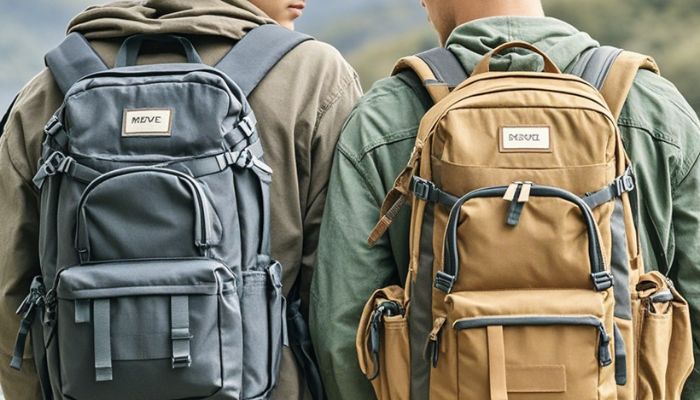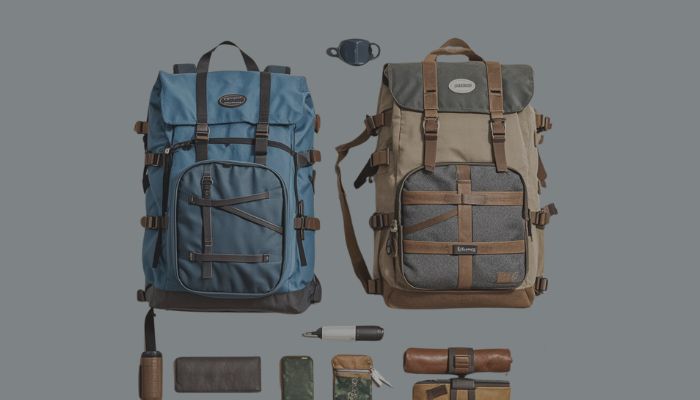In the hustle and bustle of the workplace, a suitable backpack is like a silent, reliable companion. Not only is it an essential item for daily commuting, but it also serves as a powerful tool for enhancing work efficiency and shaping personal style. In this guide, we will delve into how to choose the right backpack based on professional needs, how to efficiently organize the space inside, and how to maximize the functionality of your backpack during both daily use and travel, ensuring that your outings are well-organized, minimalist, and stylish.
- Choosing the Right Backpack: Durability, Style, and Functionality
When selecting a backpack, professionals typically opt for business backpacks, daily backpacks, or tech backpacks. These types of backpacks usually feature a sleek, modern design while offering excellent durability and functionality. When choosing one, it’s important to ensure the capacity meets your daily work needs. For example, check if it has a dedicated compartment for your laptop, a section for documents, and external pockets for quick-access items. Additionally, comfort is key—especially when it comes to the shoulder straps, the back support system, and the overall weight. A backpack that remains comfortable even after long periods of use is the ideal choice.
- Backpack Organization Principles: Smart Division and Balanced Weight
To organize your backpack efficiently, the key lies in smart compartmentalization and evenly distributing the weight. Frequently used items like a water bottle or smartphone should be placed in easily accessible areas, while heavier items, such as your laptop and books, should be positioned at the center of the backpack to maintain balance. It’s also essential to use internal pockets and dividers to protect fragile electronics from impacts while keeping stationery, chargers, and smaller items neatly organized.
- Organizing Core Items
Electronics: Store your laptop and tablet in dedicated compartments or protective sleeves. For cables and chargers, consider using cable ties or small storage boxes to prevent tangling. Office Supplies: Keep pens, notebooks, and file folders in easily accessible spots. Business cards should be placed in a cardholder for quick retrieval. Business Cards and Document Management: Contracts and reports should be neatly stored in a document folder or cardholder, giving you a professional and organized appearance.
- Organizing Small Items
For smaller items like headphones, charging accessories, and personal care products (e.g., masks, and hand sanitizer), use small pouches or boxes. This will save space and keep everything easy to find. As for food and beverages, store them in designated spots to maintain a clean and tidy backpack.
- Maximizing Extra Space
External pockets of your backpack are perfect for storing items you need to access quickly, such as your phone, keys, or transit card. Inside the bag, use dividers or compression bags to optimize space. These small organization tips are especially helpful during business trips or when you need to pack multiple items efficiently.
- Backpack Organization for Travel and Business Trips
When traveling or on a business trip, you need to pack both clothing and toiletries alongside your work essentials. Fold clothes to minimize space, and use travel-sized toiletries. For extra security, consider using anti-theft backpacks and security pouches to protect valuable items like your wallet or passport.
- Maintenance and Cleaning: Keep Your Backpack Looking New
Regular cleaning is essential to maintain the longevity of your backpack. Whether inside or out, make sure to clean the bag regularly using appropriate cleaning agents. This will help preserve the material and keep your backpack in good condition. Also, periodically declutter your backpack by removing outdated or unnecessary items, ensuring it stays light and efficient.
- Personalization and Customization
Add some functional accessories to your backpack, such as a keyboard, external hard drive, or portable charger, to increase its utility. If you have multiple backpacks, consider labeling them or adding identifiers to easily distinguish between them.
- Backpack Usage Tips and Suggestions
Tailor your use of the backpack to different work scenarios—such as meetings, daily commuting, or business trips—to make the most of its versatility. For example, when attending a meeting, opt for a lightweight backpack with only the necessary documents and electronics. For daily commuting, choose a larger backpack with enough capacity to carry everything you need.
In conclusion, a thoughtfully chosen and well-organized backpack serves as a powerful assistant in the workplace. Not only does it enhance your professional image, but it also helps you manage your time more efficiently. We hope this guide provides you with useful insights that make your professional life smoother, turning your backpack into a mobile workstation and ensuring that every outing is both effortless and effective.


